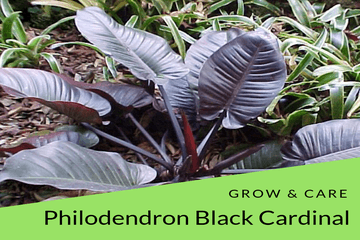Tips for growing philodendron prince of orange
Philodendron prince of orange have an amazing glossy bright orange leaf. However, this leaves will slowly transform in to a deep green as they mature. Hence prince of orange will be displaying multiple shades of salmon, orange and finally maturing to a medium light green.
Philodendron prince of orange can Grow around 18 inches tall. Apart from that this philodendron is a shade loving. Because of that philodendron prince of orange commonly kept as a houseplant
Prince of orange is self-heading rather than vining. The large leaves growing from a center base. Meanwhile the older leaves fall off, making way for new growth. Philodendron Prince of Orange grows outdoors in U.S. Department of Agriculture plant hardiness zones 10 and above. However, this philodendron can live in low light and low humidity make it well-suited to indoor container growing.
Basic care philodendron prince of orange
| POTTING MIX Philodendrons do best in loose, well-drained soil that is high in organic matter. They will grow in 100% sphagnum peat moss. Soilless mixtures such as peat-vermiculite or peat-perlite are also satisfactory. |
| WATER When growing philodendron plants, allow the top inch of soil to dry out between waterings. The length of your index finger to the first knuckle is about an inch, so inserting your finger into the soil is a good way to check the moisture level. Droopy leaves can mean that the plant is getting too much or not enough water. But the leaves recover quickly when you correct the watering schedule. |
| SUNLIGHT Set the Philodendron in a location with bright, indirect sunlight. Find a position near a window where the sun’s rays never actually touch the foliage. While it’s normal for older leaves to yellow, if this happens to several leaves at the same time, the plant may be getting too much light. On the other hand, if the stems are long and leggy with several inches between leaves, the plant probably isn’t getting enough light |
| FERTILIZER Feed philodendron houseplants with a balanced liquid foliage houseplant fertilizer that contains macro-nutrients. Water the plant with the fertilizer monthly in spring and summer and every six to eight weeks in fall and winter. Slow growth and small leaf size is the plant’s way of telling you that it isn’t getting enough fertilizer. Pale new leaves usually indicate that the plant isn’t getting enough calcium and magnesium, which are essential micro-nutrients for philodendrons. |
| TEMPERATURE The ideal temperature for a philodendron is between 65 – 78°F during the day, and around 60°F at night. |
| TOXICITY Philodendron should not be consumed by animals or humans. Lacy tree philodendrons are toxic to cats and dogs. Being educated on poisonous plants can help you avoid any accidents all the while enjoying your greenery. |
| PEST PROBLEMS Philodendron are not prone to insects, but you may encounter aphids and mealybugs. You can wipe off mealybugs with cotton balls dipped in rubbing alcohol. Periodically showering the plant with water and applying insecticidal soap will help keep pests at bay. |
Prince of orange in landscaping
Philodendron Prince of Orange is good in landscaping and interior designs. in addition It is widely grown for foliage where the elliptic to ovate leaves could show off their striking colours.
For instance Prince of Orange plants can be grown as a group of shrubs in a large planting because of its compact growth habit. Apart from that Small Prince of Orange plants are usually seen placed on a top-level table while the large ones are commonly placed at the floor.
When to repot philodendron prince of orange?
You can start repotting Prince of Orange if the growth slows. Besides that, when leaves are coming in smaller than usual is the good sign that your philodendron need to be repotting. For your information the smaller growth indicates that the pot is too small for the plant.
For larger floor plants, we suggest repotting every 18-24 months. Typically, you want to choose a potting vessel 2”- 4” larger in diameter to allow for growth. In other words don’t choose a pot much larger than the previous as this could drown the plants roots.
If you prefer to maintain the current size of your plant, repot into the same vessel, providing new soil and trimming away some roots and foliage. Repotting in the spring or summer is ideal. Remember for repotting you must use a loose and well-draining potting soil
must read:How to repot your philodendron?
Why my prince orange leaf is turning yellow?
Most often yellowing occurs due to over or under watering. If you see a combination of yellow and brown on the same leaf, it is often due to over watering. If fully yellow leaves, along with some brown crispy spots on additional leaves occur then it could be under watering.Above all check in with the soil to determine if it matches your diagnosis. 
must read:How to prune your philodendron?
where to buy philo price of orange?you can buy prince of orange at amazon for only $34.95








3 Comments
dramatics · June 30, 2019 at 2:14 am
Ꭼxcellent post. I used to be chеcking cοntinuoᥙsly this weblog and I am impressed!
Extremely helpful info sρecially the ultimate phase :
) I deal with such info a lot. I was seeking this
certain info for a very long time. Thank you and best of luck.
Philodendron Birkin Grow & Care Tips | Philodendron Plant · January 20, 2021 at 4:02 am
[…] philodendron prince orange […]
Philodendron Imperial Green Grow & Care Tips - Philodendron Plant · April 11, 2022 at 3:09 am
[…] is very similar to Philodendron Imperial Red, Philodendron Prince Of Orange and Philodendron […]